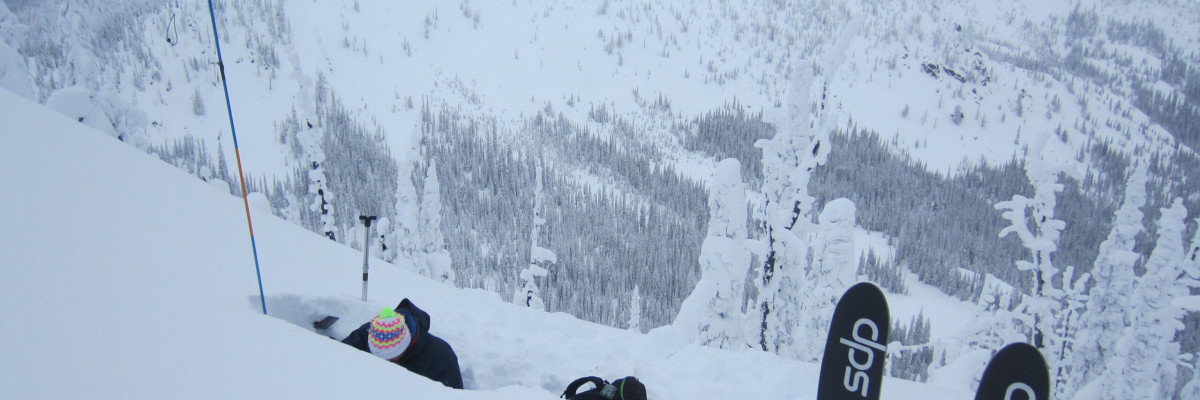The current avalanche danger is MODERATE in the west central Montana backcountry. Human triggered avalanches are possible. Heightened avalanche conditions exist in isolated terrain. Evaluate snow and terrain carefully and identify features of concern.
Good morning, this is Travis Craft with the West Central Montana Avalanche Center’s avalanche advisory for February 4, 2016. This danger rating does not apply to operating ski areas, expires at midnight tonight and is the sole responsibility of the U.S. Forest Service.
Weather and Snowpack
Mountain temperatures range from 14 F to 24 F in the region. Winds are 09 mph with gusts of 16 mph out of the SSW in the Bitterroot. The forecast area received 1 to 3 inches of new snow in the last 24 hours.
The Rattlesnake has received 16 inches of light snow over the last 48 hours. The rest of the advisory area received lower amounts of snow. Dudley and I toured in the Rattlesnake yesterday and we observed that the snowpack is adjusting to the new load. We saw settlement rings around trees and the snowpack was buckling. Brian was at Lolo pass and observed similar findings with the snow bonding well to the rain crust at lower elevations.
The main avalanche problem today is loose dry avalanches. These avalanches are possible to trigger today on steep slopes > 35 degrees and they are not a problem unless you are carried into a terrain trap (trees, cliffs and gullies).
The second avalanche concern today are wind slabs. These slabs formed in isolated areas on ridge tops. Though not widespread, these slabs are touchy. We observed a natural release in the Rattlesnake that occurred in the last 48 hours. The slab was relatively small and did not trigger any other avalanches on the slope.
The third avalanche problem is a storm slab. We saw evidence of natural storm slab releases that were only a couple of inches thick. Beware that on steep slopes it may be possible to trigger these storm slabs.
With the accumulation of a significant amount of new snow, the snowpack is adjusting to the weight and is settling. There are weak layers present in our snowpack, but they were not reactive in our snow pit tests. When choosing to recreate on a slope, dig a pit to see if there are any layers of concern. Dudley and I found a shallow snowpack of 115cm where the layer of basal facets was hard to trigger in compression tests and did not propagate in the ECT.
Avalanche and Weather Outlook
The snowpack is settling and adjusting to the new load. A new weather system is entering our area this morning and is expected to create banding snow showers which could drop 2 inches of snow or more in a short time in isolated areas. If you start to get shooting cracks, sudden collapses, or any other bullseye data, that means that conditions are changing and becoming rapidly unstable. The system is predicted to come in with strong winds and there is a lot of new snow available for transport, potentially creating wind slabs. The avalanche danger may increase with the addition of new snow and strong winds.
Ski and ride safe. Logan will issue the next advisory on Saturday.














